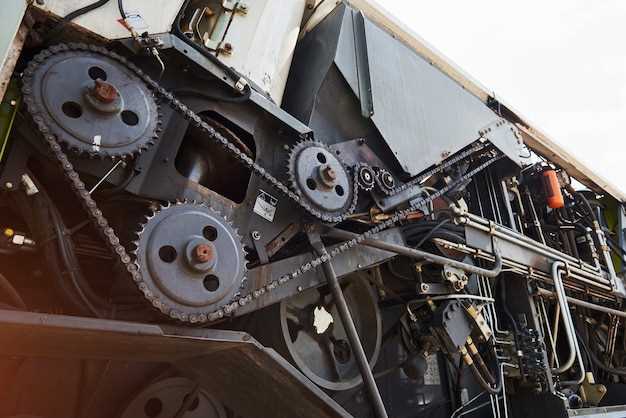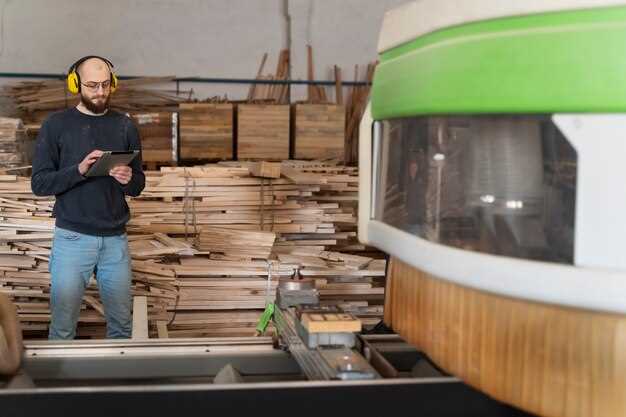
The evolution of trailer design has witnessed a remarkable shift in recent years, fueled by the introduction of new materials that redefine functionality and aesthetic appeal. These innovations not only enhance the visual characteristics of trailers but also contribute significantly to their durability, weight reduction, and overall efficiency.
One of the key drivers behind this transformation is the integration of advanced composite materials and lightweight metals. The use of these substances allows designers to create trailers that are not only designed for optimal performance but also crafted to be more environmentally friendly. As manufacturers strive to meet rigorous industry standards, the emphasis on utilizing sustainable resources has never been more critical.
Furthermore, the implementation of innovative materials has led to a wave of creative possibilities within trailer design. Manufacturers are experimenting with combinations of materials that enhance both function and style, resulting in eye-catching trailers that appeal to a broader audience. By embracing this shift, the industry is poised to create vehicles that cater to the diverse needs of modern consumers, setting a new standard for what trailers can achieve.
Advanced Composite Materials for Lightweight Trailers

The evolution of trailer design is heavily influenced by the incorporation of advanced composite materials. These materials, which include combinations of fibers such as carbon and glass with resins, provide exceptional strength-to-weight ratios. By utilizing composites, manufacturers can achieve significant weight reductions without compromising structural integrity, which is essential for enhancing fuel efficiency and load capacity.
One of the key advantages of advanced composites is their resistance to corrosion and fatigue. Unlike traditional materials like steel or aluminum, composites do not rust and are less prone to wear over time, reducing maintenance needs. This durability translates to longer lifespan and higher resale value for trailers.
The flexibility of composite materials also allows for innovative design possibilities. Designers can create more aerodynamic shapes that improve performance and reduce drag. Customizable properties, including stiffness and thermal resistance, enable engineers to fine-tune trailers for specific applications, tailoring designs to meet the varied demands of consumers.
Moreover, advanced composites facilitate the integration of modern technology, such as sensors and smart systems. This integration enhances safety and operational efficiency, making lightweight trailers not only more functional but also smarter and connected.
In summary, advanced composite materials are revolutionizing lightweight trailer design. Their unique properties provide solutions that enhance performance, reduce maintenance, and enable cutting-edge design, making them an essential component in the future of trailer manufacturing.
Impact of Smart Materials on Trailer Functionality

Smart materials have revolutionized the design and functionality of modern trailers, introducing a range of new possibilities that enhance performance and user experience. These innovative materials respond dynamically to environmental stimuli, such as temperature, pressure, or moisture, enabling trailers to adapt to varying conditions efficiently.
One of the most significant impacts of smart materials is their ability to reduce weight while maintaining structural integrity. Lightweight composites offer improved fuel efficiency without compromising durability. Manufacturers are increasingly using these new materials to create trailers that are not only lighter but also stronger, allowing for higher payload capacities and better handling on the road.
Additionally, smart materials enhance safety features within trailer design. For example, the incorporation of self-healing materials can automatically repair minor damages, significantly extending the lifespan of the trailer. This feature contributes to lower maintenance costs and increased reliability for users, a critical aspect for those who depend on trailers for transportation.
Moreover, the integration of sensors embedded in smart materials provides real-time data on the trailer’s condition, such as tire pressure or structural integrity. This technology supports proactive maintenance, helping owners address potential issues before they escalate, ensuring safer journeys.
Thermochromic and photoluminescent materials are also making waves in trailer aesthetics and functionality. These materials can change color based on temperature or light conditions, enhancing visibility during night travel, which is crucial for road safety. Such features are particularly beneficial for trailers used in diverse environments, adapting their appearance for optimal safety.
In summary, the impact of smart materials on trailer functionality is profound. From improved lightweight design and enhanced safety features to real-time monitoring capabilities, these new materials are setting a new standard in trailer innovation, paving the way for a more efficient and safer future in transportation.
Sustainable Practices with Eco-Friendly Trailer Materials
In the pursuit of eco-friendly trailer design, the choice of materials plays a crucial role in promoting sustainability. Utilizing renewable resources such as bamboo, recycled aluminum, and bio-based composites significantly reduces the environmental footprint of trailers. These materials not only enhance performance but also ensure durability and longevity, contributing to a lower overall carbon impact.
Implementing recycled materials allows manufacturers to minimize waste and energy consumption associated with production. By incorporating items like recycled steel and plastic into trailer design, companies can create sturdy structures while diverting materials from landfills. This approach not only conserves natural resources but also supports a circular economy.
Moreover, lightweight materials such as advanced fiberglass and carbon fiber composites are increasingly utilized for efficiency in fuel consumption. By reducing the overall weight of trailers, manufacturers can enhance towing efficiency, which subsequently reduces greenhouse gas emissions. Lightweight design is a key element in the modern shift towards sustainable transport solutions.
Another significant aspect of eco-friendly trailer materials is their biodegradability. Materials like hemp and cork offer natural, biodegradable options for components that might otherwise contribute to long-lasting waste. These materials align with a commitment to environmentally responsible practices and facilitate easier disposal at the end of their lifecycle.
In addition, employing local materials minimizes transportation emissions and supports local economies. Sourcing materials from nearby suppliers encourages the growth of sustainable practices within communities and reduces the carbon footprint associated with long-distance shipping.
Finally, integrating renewable energy technologies into trailer design, such as solar panels made with sustainable materials, can further enhance the environmental efficiency of modern trailers. This integration allows for off-grid functionality, catering to the growing demand for eco-conscious travel solutions.
In conclusion, the careful selection of eco-friendly materials in trailer design embodies innovative sustainable practices. By prioritizing recyclable, lightweight, biodegradable, and locally-sourced materials, the trailer industry can lead the way in reducing environmental impacts while meeting consumer demands for durability and efficiency.





